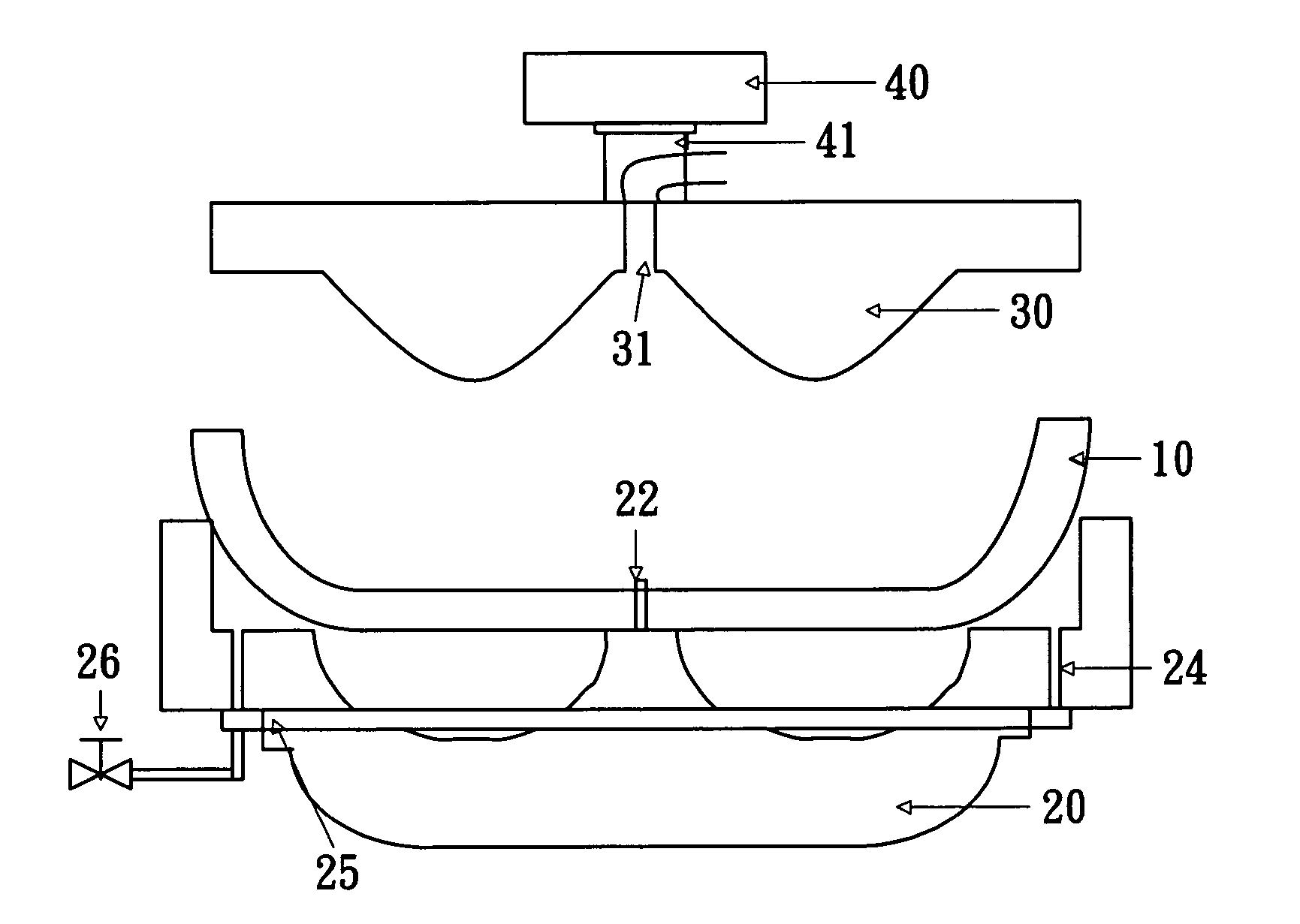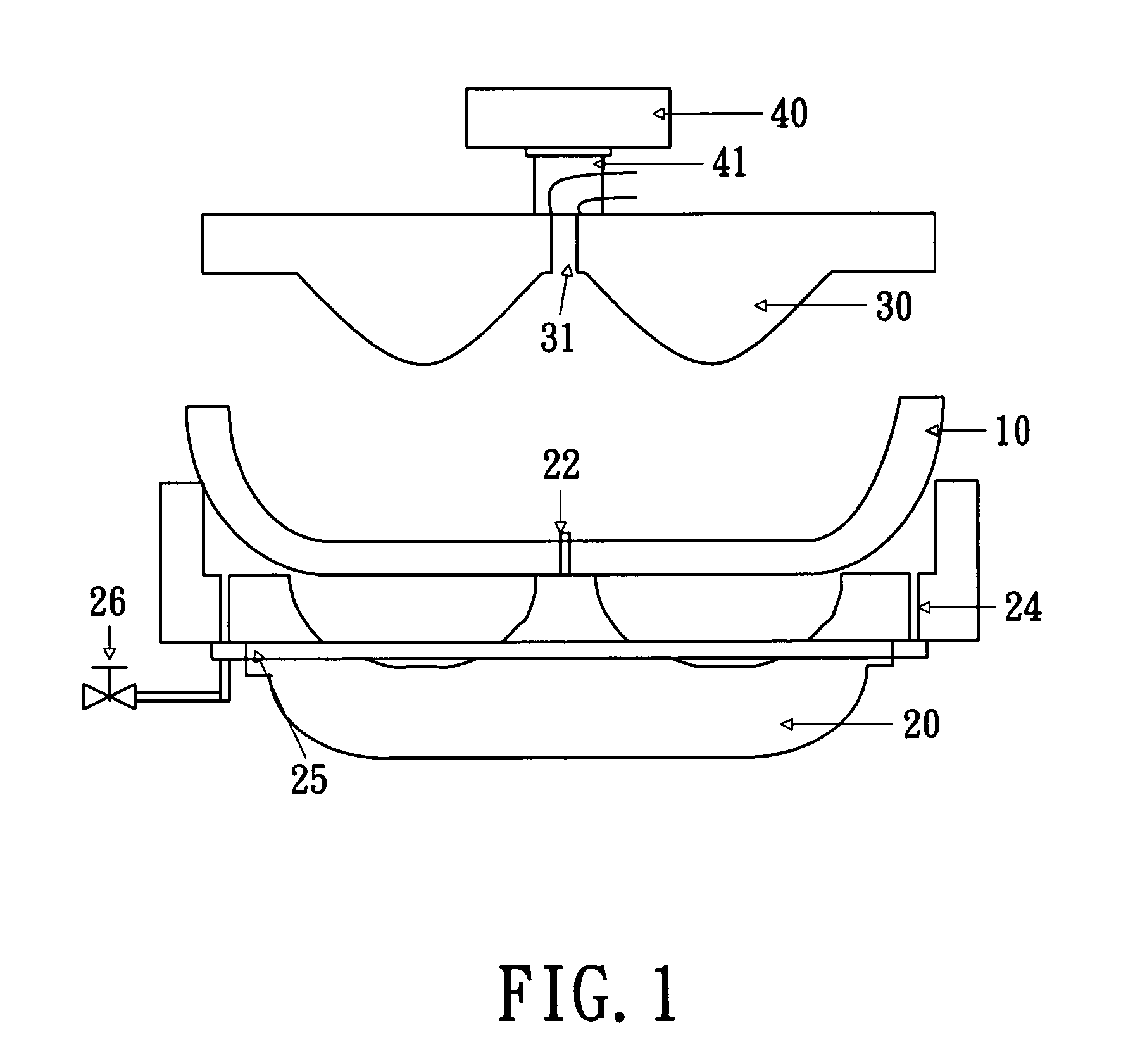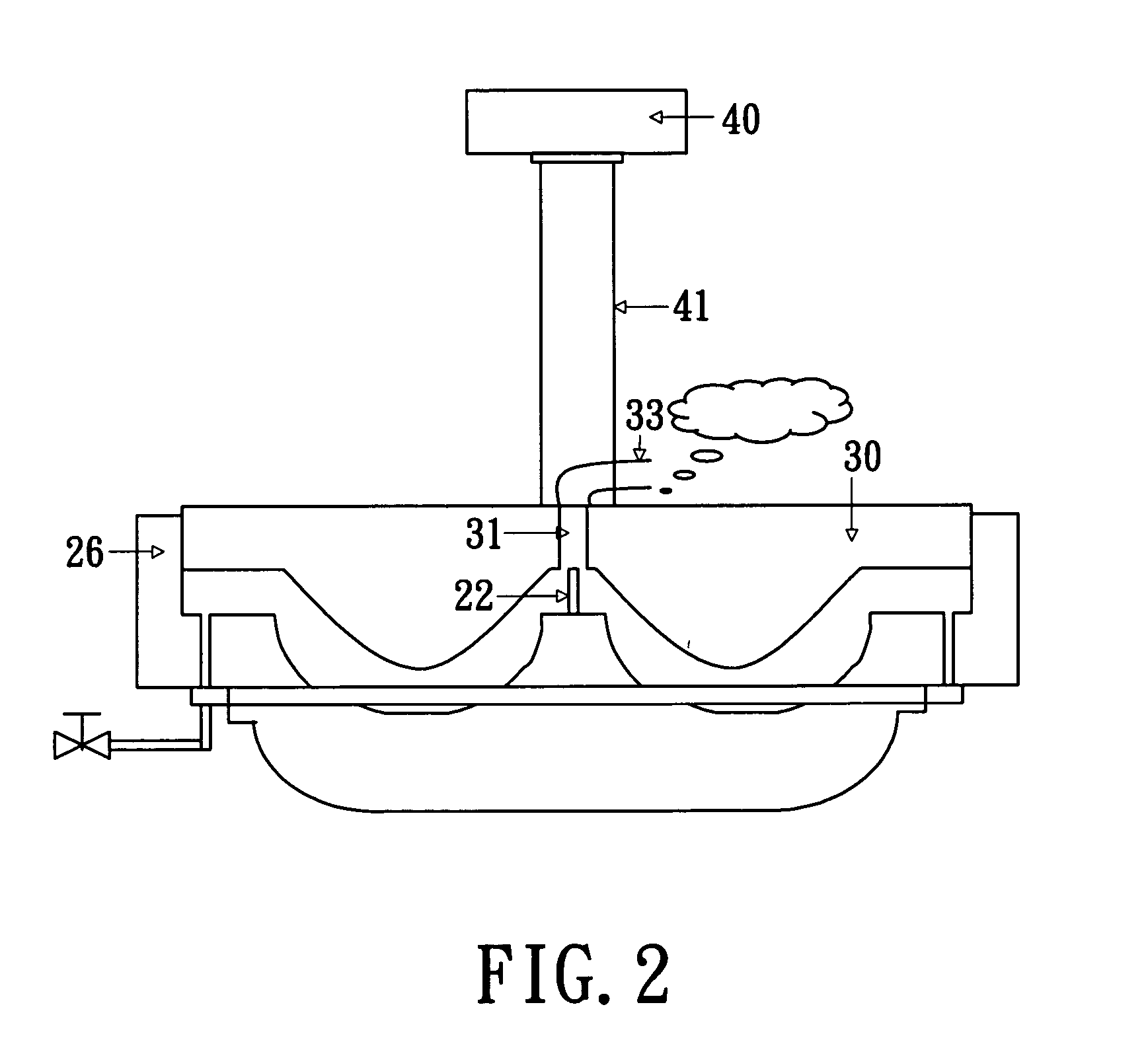Method for preparing brassiere cup
a technology for brassiere cups and brassieres, applied in the field of preparing brassiere cups, can solve the problems of poor shape stability after laundering and machine washing, difficulty in producing brassiere cups with even softness and resilience using this process, and inability to meet current fashion requirements for seamless brassiere cups, etc., to achieve the effect of reducing the maximum process temperature, reducing the heat exposure time of polyurethane foam, and less cycle tim
- Summary
- Abstract
- Description
- Claims
- Application Information
AI Technical Summary
Benefits of technology
Problems solved by technology
Method used
Image
Examples
examples 1 to 9
[0038] Semi-commercial scale free-rise boxfoams were produced to evaluate reaction speed, in order to determine the concentration of isocyanate residual in foam at specified time. TDI based polyether foam and IPDI based polyester foam with dimension of about 3.5 ft (length)*3.5 ft (width)* 3 ft (height) which has foam density of about 2.2 pcf (pounds per cubic foot) were produced and then stored at 80° F. / 60% humidity for post-curing. The foam specimen was cut from the center after the specified post-curing period, for free NCO % and airflow tests.
TABLE 2Semi-commercial scale free-rise foamFoam Number123456789Voranol 3137A100100100100Polyester100100100100100PolyolWater2.82.82.82.82.82.82.82.82.8Voranate T-8033.433.433.433.4Desmodur I49.449.449.449.449.4Isocyanate100100100100104104104104104IndexFree-rise FoamAirflow (cfm)4.84.64.84.82.32.22.32.22.2Post-cure0.5243360.52448336time (hrs)Free NCO0.46%0.13%0.04%7.60%7.14%6.52%1.12%(wt %)TDA in Foam2.8N.A.N.A.N.A.N.A.N.A.(ppm)IPDA inN.A....
examples 10 to 18
[0039] Foam specimens of 10 in. (length)×10 in. (width)×1.5 in. (depth), which were cut from foam buns produced in examples 1 to 9, were molded according to present invention immediately after cutting. A “K” type thermal couple, which was linked to a thermograph, was inserted and buried in the center of the foam, in order to record the maximum foam temperature during the molding procedure. Mold parts as described in TABLE 3 were used through out the evaluations. Mold parts have built-in electric heaters capable of heating the mold parts to a specified temperature. The mold parts were installed on a hydraulic press device built by Shen-Lin Industries Co. Ltd. in Hong Kong. The device is capable of providing pressure of approximately 60 psi on the mold area. Steam of approximately 56 psi was injected through the holes on the edge of the male mold part for specified time after the first stage of mold closure.
[0040] Exhaust steam was emitted from the holes on the female mold part. The ...
PUM
| Property | Measurement | Unit |
|---|---|---|
| thickness | aaaaa | aaaaa |
| hydraulic pressure | aaaaa | aaaaa |
| pressure | aaaaa | aaaaa |
Abstract
Description
Claims
Application Information
 Login to View More
Login to View More - R&D
- Intellectual Property
- Life Sciences
- Materials
- Tech Scout
- Unparalleled Data Quality
- Higher Quality Content
- 60% Fewer Hallucinations
Browse by: Latest US Patents, China's latest patents, Technical Efficacy Thesaurus, Application Domain, Technology Topic, Popular Technical Reports.
© 2025 PatSnap. All rights reserved.Legal|Privacy policy|Modern Slavery Act Transparency Statement|Sitemap|About US| Contact US: help@patsnap.com



